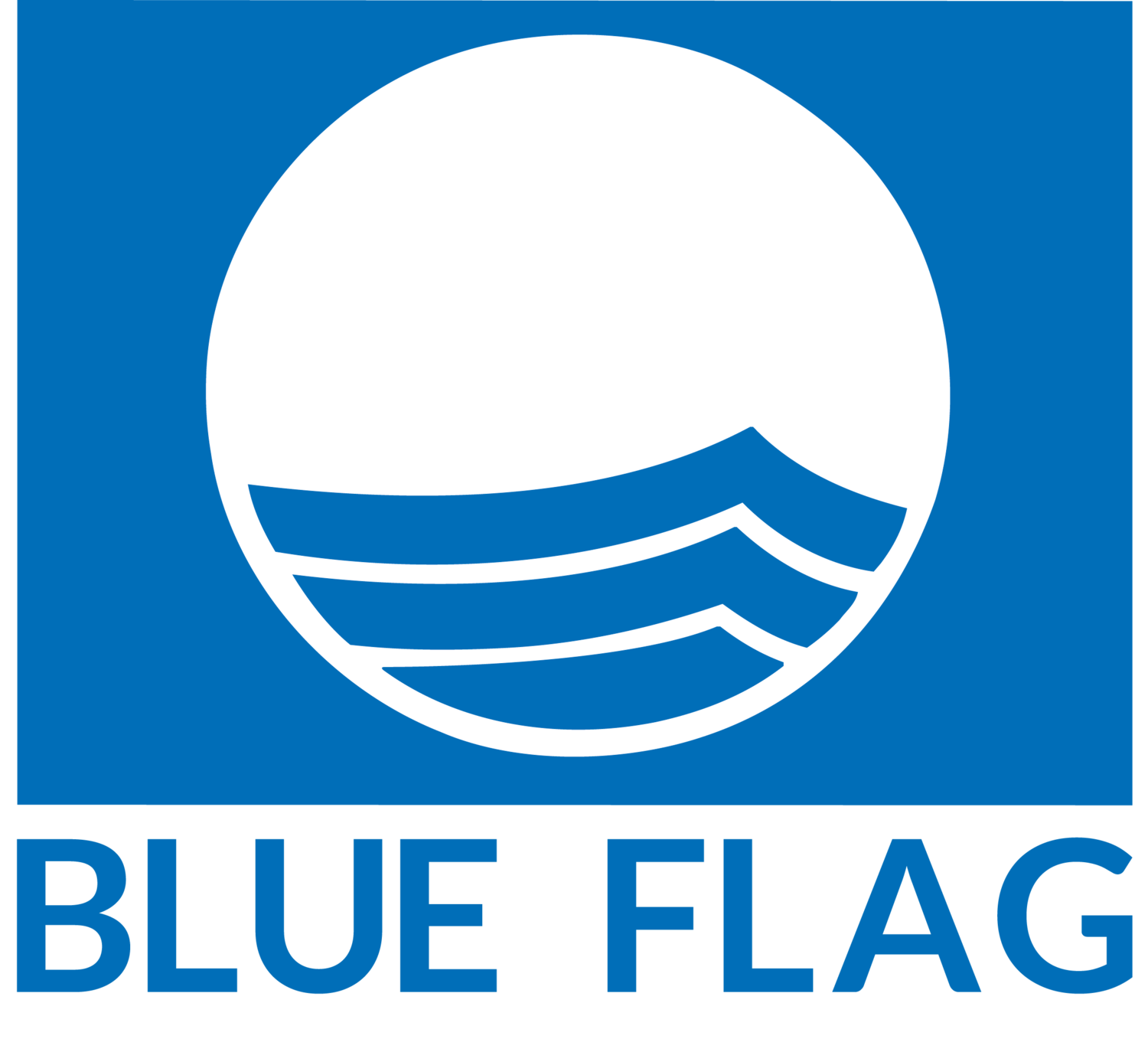Blue Flag's criteria
The Blue Flag programme is committed to maintaining ambitious and relevant requirements that sites need to conform with in order to showcase the flag. Our award ensures high standards in water quality, waste management, climate action, biodiversity protection, education, information, safety, and accessibility, helping destinations and tourism service providers lead the way in sustainable coastal management.
Our criteria are developed in partnership with experts, to ensure they are sound. Additionally, we review our criteria and develop new ones to ensure that Blue Flag stays a symbol of excellence, and to encourage our site owners to always do better.
The full Blue Flag requirements and explanatory notes are available on the following documents, providing transparency and clarity on the standards sites must meet to achieve certification.
Criteria Overview
Continuous improvement and periodic review
Blue Flag requirements undergo periodic revision to stay aligned with global, international, and regional sustainability standards. This process also considers local and national regulations, ensuring that criteria remain both rigorous and adaptable to diverse environmental and regulatory contexts.
Transparent and reliable conformity assessment
Certified sites undergo an independent, transparent, and internationally recognized conformity assessment process. Our assessment rules align with international conformity assessment standards and relevant legal frameworks, ensuring credibility and trust in the Blue Flag label.
Commitment to tourists and consumers
Millions of travelers worldwide trust the Blue Flag sustainability label to guide their choices when selecting destinations, beaches, marinas, and tourism boats. Our strict criteria help ensure that certified sites uphold the highest environmental and safety standards, providing visitors with a safe, clean, and responsible tourism experience.
Criteria - Six key areas
1. Education, Information and Stakeholder Engagement
Blue Flag sites play an active role in raising awareness and educating about environmental protection and sustainability. Certified sites must:
Display educational information on local ecosystems, sustainability practices, and responsible conducts that users need to adopt to keep safe and protect nature.
Organize environmental activities for visitors, staff, and local communities.
Engage stakeholders, including local businesses, authorities, and residents, in coastal management efforts.
2. Climate Action
Sites must take on measures to reduce their carbon footprint and adapt to climate challenges. This includes:
Implementing energy-efficient infrastructure and promoting transportation with lower greenhouse gas emissions.
Mapping greenhouse gas emissions and identifying key emission hotspots.
Implementing climate adaptation strategies to address coastal erosion, extreme weather events, and sea-level rise.
3. Biodiversity Management
Certified sites must protect and restore biodiversity in coastal and marine environments by:
Implementing measures to safeguard local wildlife and habitats.
Managing coastal vegetation and sand dunes responsibly to prevent erosion.
Collaborating with the relevant authorities for adequate information and management of sensitive natural areas and protected areas.
4. Pollution Management and Water Quality
Maintaining clean and healthy environments is a cornerstone of the Blue Flag programme. Sites must:
Maintain excellent water quality through regular testing and public reporting.
Ensure proper waste management, including recycling, safe handling of hazardous waste, and reduction of plastic pollution.
Prevent oil spills, chemical contamination, and sewage discharge in marine and coastal areas.
5. Accessibility
Blue Flag sites must be welcoming and inclusive for visitors by:
Providing wherever possible facilities for people with disabilities, such as ramps, adapted pathways, and accessible restrooms.
Offering clear and visible information online and on-site to help all visitors prepare their visits and navigate the site.
Promoting access to information, recreational services, and natural areas for a wide range of people, including those with temporary impairments or disabilities.
6. Safety and Services
To ensure a safe and enjoyable experience for all visitors, certified sites must:
Have lifeguards and/or safety equipment available, depending on the result of specific, independent risk assessments.
Provide emergency response plans for accidents, natural hazards, or environmental risks.
Ensure proper sanitation, drinking water availability, and first aid facilities.

